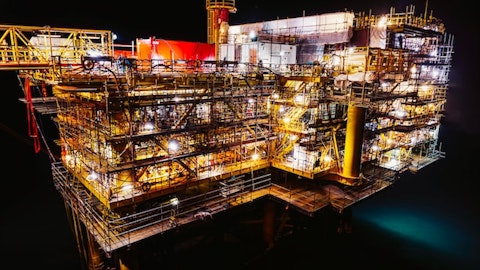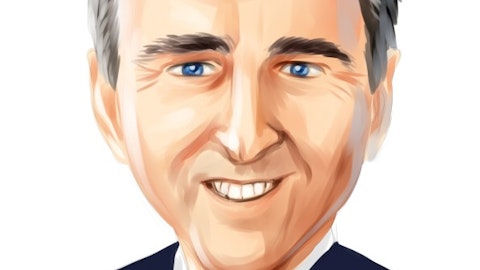Our combination of both dry ore mining and solution mining provides us with a U.S. industry-leading cost structure that will continue to allow us to run at full utilization and sell every time we can safely produce to optimize our fixed costs for this year and in the many years ahead, regardless of the broader economic and pricing environment. As stated in our earnings release, we have recently started commissioning activities with our Grainger expansion project and expect this work to continue over the remainder of 2023. Starting in early 2024, we expect the expansion to be fully online and ultimately add in approximately 750,000 tons a year, with a very attractive marginal operating cost per ton to our supply capabilities in 2024, that will both increase our sales volumes and lower our operating costs per ton at Grainger and throughout our entire soda ash operation.
Pro forma for the Grainger expansion, we continue to believe our 4.7 million to 4.8 million tons of soda — of annual soda ash production capacity will provide us with the cost structure and scale to be successful across all economic cycles. Despite some expected near-term volatility in soda ask prices, we remain extremely bullish on the long-term fundamentals of the soda ask business and believe we are well-positioned for the future. Our Marine Transportation segment continues to meet or exceed our expectations as market conditions and demand fundamentals continue to remain steady. As mentioned in the release, we continue to operate with utilization rates at or near 100% of available capacity for all classes of our vessels, as the supply and demand outlet for Jones Act tanker tonnage remains structurally tight.
This structural change in market dynamics has been driven by a combination of steady and robust demand, the continued retirements of older equipment and effectively zero new construction of our types of marine vessels. This lack of new supply of marine tonnage combined with strong demand continues to drive spot day rates and longer term contracted rates in both of our fleets to record levels. To provide some additional context, we along with other industry participants, continue to believe that current day rates that are still not — are still not yet high enough to justify the construction of new marine equipment. In addition to the significant cost of a new vessel, the long construction period, which can be three plus years to four plus years in some cases for larger vessels, the lack of available shipyards to build a new vessel and the need to keep day rates elevated through the construction period and for a prolonged period of time once underwater to justify construction, all point to a market that should remain structurally tight for the foreseeable future.
These broader fundamentals, combined with our increasingly termed-out contracted portfolio, including the new three-and-a-half-year contract for the American Phoenix we announced last quarter that starts in January, all lead me to believe our Marine Transportation is well positioned to deliver growing and steady earnings over the next few years. As we look ahead, we continue to remain focused on completing our growth capital program in the next 12 months, all while not losing focus on our leverage ratio. As I mentioned earlier, and will reiterate again, the long-term story for Genesis has never been brighter and remains intact. We are comfortably positioned to generate significant cash flows starting at the end of 2024 and accelerating into 2025, which will provide us with the tremendous flexibility to further optimize our capital structure and return capital to all of our stakeholders.
In advance of this additional cash flow, we have utilized a portion of our available liquidity this year to opportunistically repurchase $75 million of our Series A Preferred Equity at a discount to the contracted call premium, as well as purchase 144,900 of our common units at an average price of $9.09 per unit. As we have stated in the past, we will continue to be opportunistic in acquiring any security across our capital structure to the extent we feel they remain mispriced on the market. As we have an increasingly clear sight — clear line of sight to generating roughly $200 million to $300 million or more per year of free cash flow starting in 2025, we will continue to evaluate the various levers we can pull to return capital to our stakeholders, including paying down debt, raising our common distribution, repurchasing additional amounts of our corporate preferred security or continuing to purchase our common unit or mispriced debt security.





